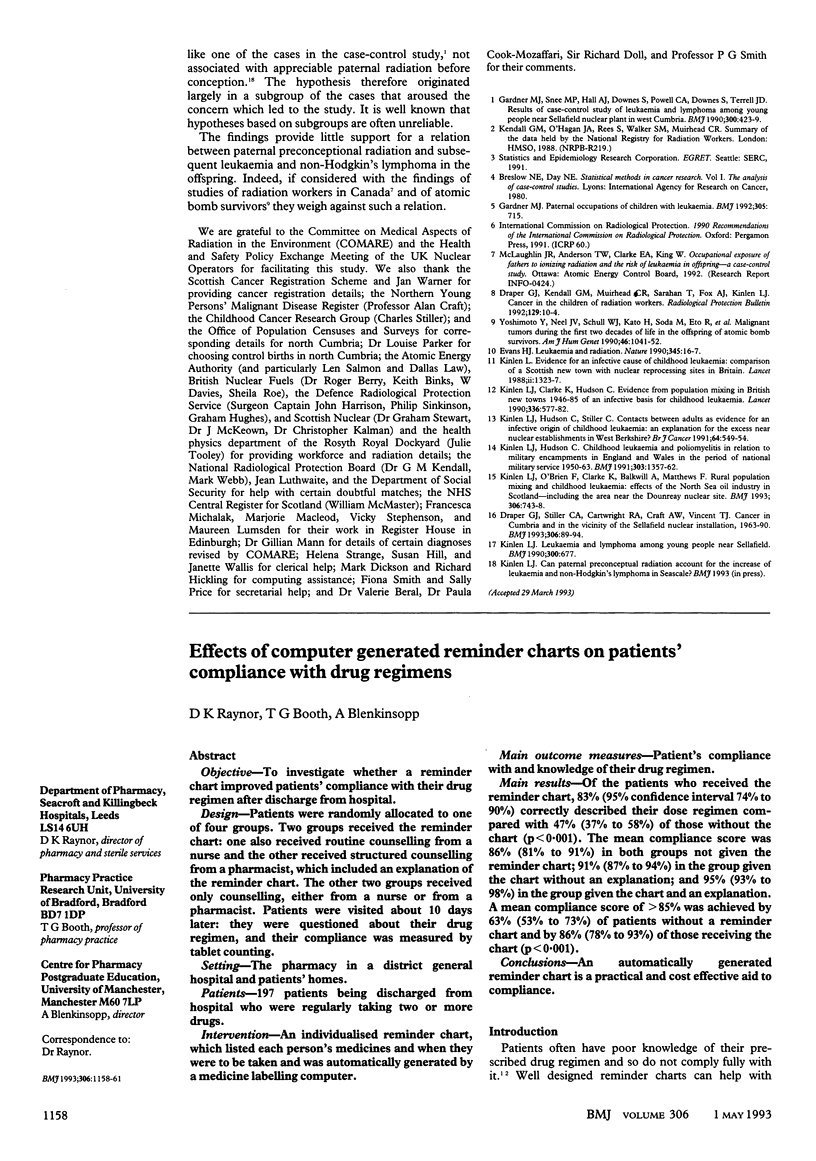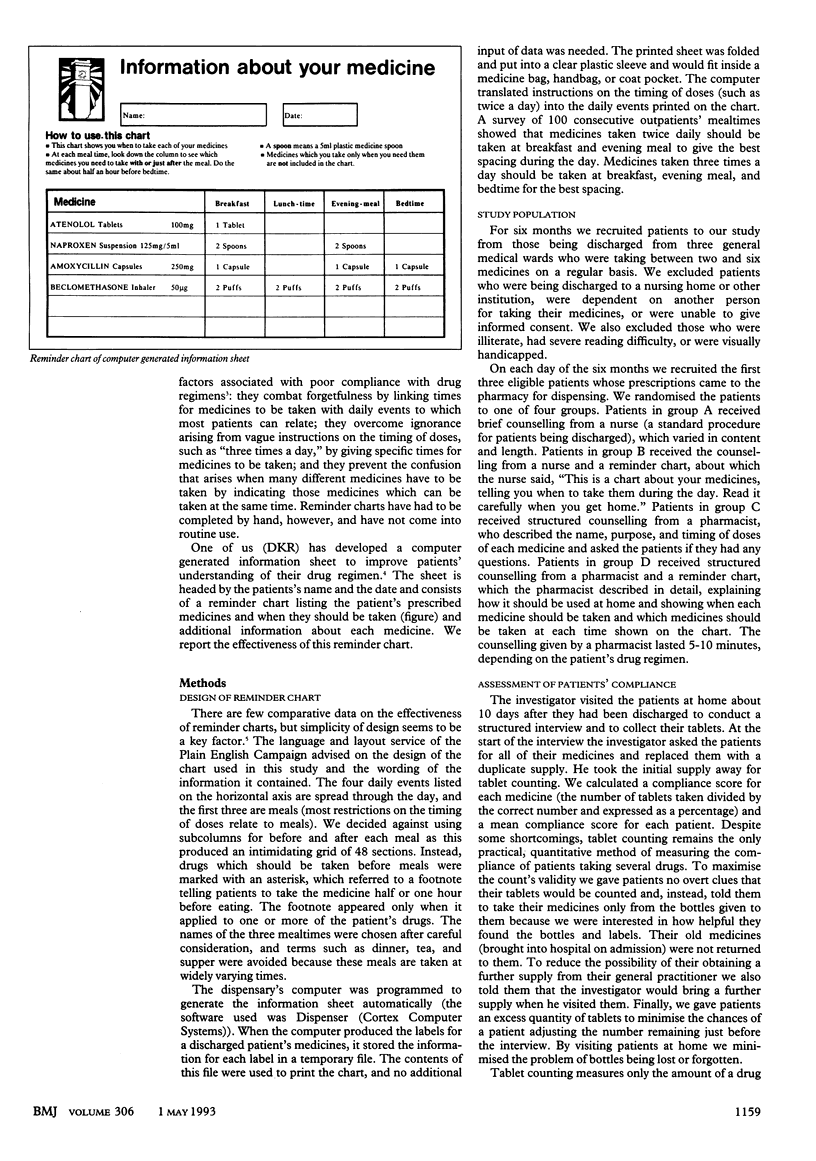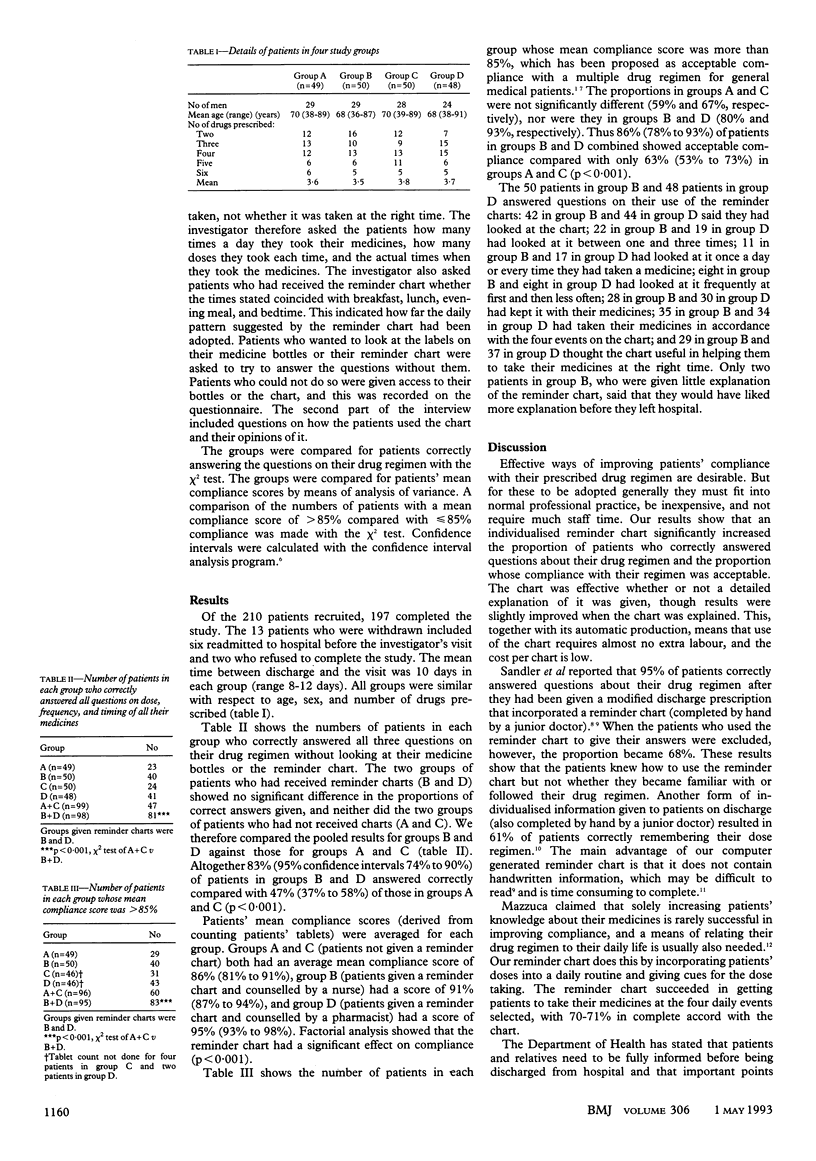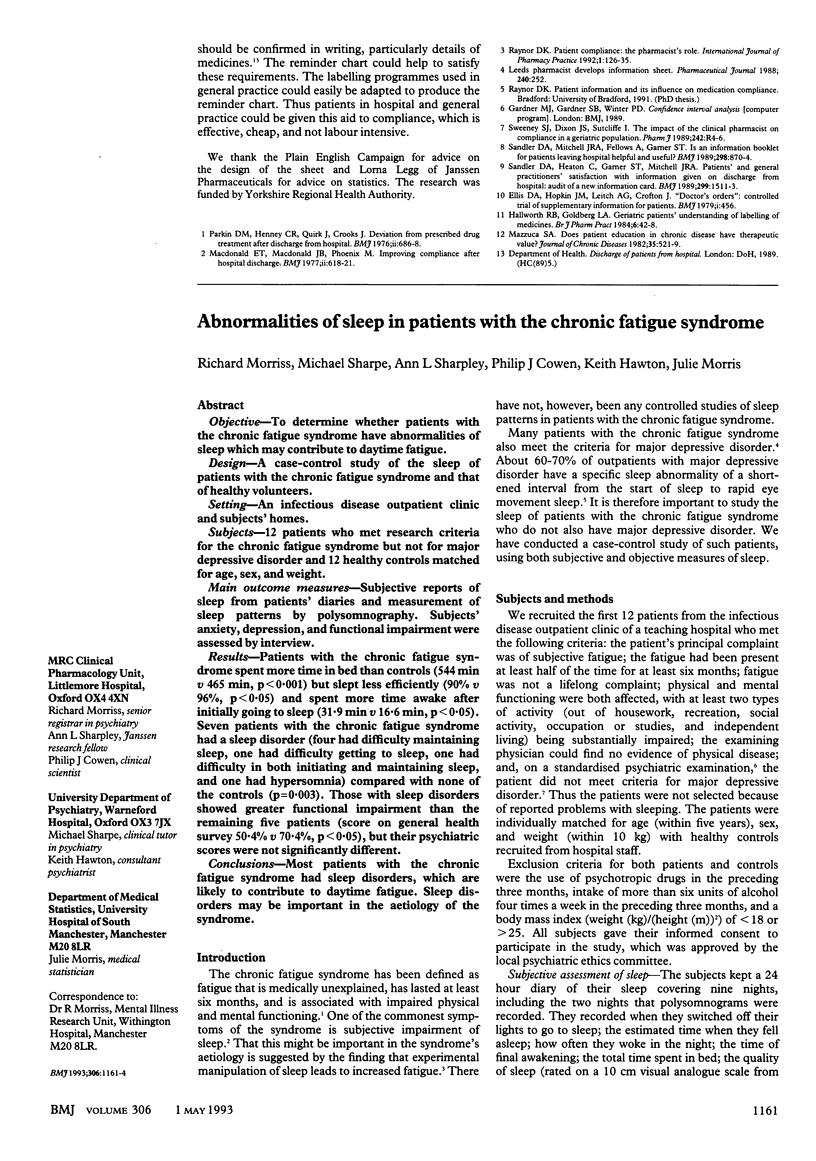Abstract
OBJECTIVE--To investigate whether a reminder chart improved patients' compliance with their drug regimen after discharge from hospital. DESIGN--Patients were randomly allocated to one of four groups. Two groups received the reminder chart: one also received routine counselling from a nurse and the other received structured counselling from a pharmacist, which included an explanation of the reminder chart. The other two groups received only counseling, either from a nurse or from a pharmacist. Patients were visited about 10 days later: they were questioned about their drug regimen, and their compliance was measured by tablet counting. SETTING--The pharmacy in a district general hospital and patients' homes. PATIENTS--197 patients being discharged from hospital who were regularly taking two or more drugs. INTERVENTION--An individualised reminder chart, which listed each person's medicines and when they were to be taken and was automatically generated by a medicine labelling computer. MAIN OUTCOME MEASURES--Patient's compliance with and knowledge of their drug regimen. MAIN RESULTS--Of the patients who received the reminder chart, 83% (95% confidence interval 74% to 90%) correctly described their dose regimen compared with 47% (37% to 58%) of those without the chart (p < 0.001). The mean compliance score was 86% (81% to 91%) in both groups not given the reminder chart; 91% (87% to 94%) in the group given the chart without an explanation; and 95% (93% to 98%) in the group given the chart and an explanation. A mean compliance score of > 85% was achieved by 63% (53% to 73%) of patients without a reminder chart and by 86% (78% to 93%) of those receiving the chart (p < 0.001). CONCLUSIONS--An automatically generated reminder chart is a practical and cost effective aid to compliance.
Full text
PDF



Selected References
These references are in PubMed. This may not be the complete list of references from this article.
- Ellis D. A., Hopkin J. M., Leitch A. G., Crofton J. "Doctors' orders": controlled trial of supplementary, written information for patients. Br Med J. 1979 Feb 17;1(6161):456–456. doi: 10.1136/bmj.1.6161.456. [DOI] [PMC free article] [PubMed] [Google Scholar]
- MacDonald E. T., MacDonald J. B., Phoenix M. Improving drug compliance after hospital discharge. Br Med J. 1977 Sep 3;2(6087):618–621. doi: 10.1136/bmj.2.6087.618. [DOI] [PMC free article] [PubMed] [Google Scholar]
- Mazzuca S. A. Does patient education in chronic disease have therapeutic value? J Chronic Dis. 1982;35(7):521–529. doi: 10.1016/0021-9681(82)90071-6. [DOI] [PubMed] [Google Scholar]
- Parkin D. M., Henney C. R., Quirk J., Crooks J. Deviation from prescribed drug treatment after discharge from hospital. Br Med J. 1976 Sep 18;2(6037):686–688. doi: 10.1136/bmj.2.6037.686. [DOI] [PMC free article] [PubMed] [Google Scholar]
- Sandler D. A., Heaton C., Garner S. T., Mitchell J. R. Patients' and general practitioners' satisfaction with information given on discharge from hospital: audit of a new information card. BMJ. 1989 Dec 16;299(6714):1511–1513. doi: 10.1136/bmj.299.6714.1511. [DOI] [PMC free article] [PubMed] [Google Scholar]
- Sandler D. A., Mitchell J. R., Fellows A., Garner S. T. Is an information booklet for patients leaving hospital helpful and useful? BMJ. 1989 Apr 1;298(6677):870–874. doi: 10.1136/bmj.298.6677.870. [DOI] [PMC free article] [PubMed] [Google Scholar]


